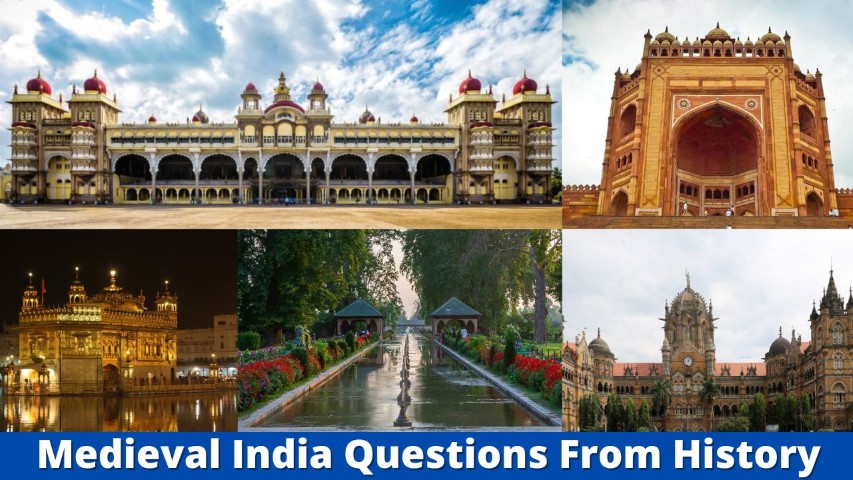Medieval India refers to a period of Post-classical history of the Indian subcontinent between the “ancient period” and “modern period”.The time period Medieval era is between the 6th century and 16th century. The beginning of the Early Medieval Period is said to be by rulers and dynasties who were taking concern of their own regions/territory without any connection with each other as a country. Later things changed and the period saw some impeccable rulers with a vision to unite the kingdoms for better administration and governance.
The medieval period is itself subdivided into the Early Medieval and Late Medieval eras. The start of the period is typically taken to be the slow collapse of the Gupta Empire from about 480 to 550, ending the “classical” period, as well as “ancient India”.The last medieval period follows the Muslim conquests of the Indian subcontinent and the decline of Buddhism, the eventual founding of the Delhi Sultanate, and the creation of Indo-Islamic architecture, followed by the world’s major trading nation, the Bengal Sultanate. The start of the Mughal Empire in 1526 marked the beginning of the early modern period of Indian history, often referred to as the Mughal era. Sometimes, the Mughal era is also referred to as the ‘late medieval period.
So, here we have collected some most Important Top 100 MCQs on “Medieval India History” with some added detail of the answers to the questions.
1. Who attacked and looted the famous Somnath temple in 1026 AD?

A. Nadir Shah
B. Genghis Khan
C. Mahmud of Ghazni
D. Muhammad Ghori
Ans: C
(located in Prabhas Patan, Veraval in Gujarat, India. It is one of the most sacred pilgrimage sites for Hindus and is believed to be first among the twelve jyotirlinga shrines of Shiva.)
2. Kandariya Mahadeva Temple of Medieval India is dedicated to which Lord?
A. Shiva
B. Brahma
C. Vishnu
D. Ram
Ans: A
(Shiva is the chief deity in the temple deified in the sanctum sanctorum. The Kandariya Mahadeva Temple, one of the best examples of temples preserved from the medieval period in India, is the largest of the western group of temples in the Khajuraho complex which was built by the Chandela rulers.)
3. The TajMahal is called a ‘dream in marble. Which monument is called a dream of stone’?
A. The Rang Mahal
B. The Panch Mahal
C. The Red Fort
D. The Bahai temple
Ans: B
(ThePanch Mahal meaning `wind catcher tower’ was commissioned by Akbar. This structure stands close to the Zenana quarters (Harem) which supports the supposition that it was used for entertainment and relaxation.)
4. When did Humayun die?
A. 1530
B 1540
C 1555
D 1556
Ans: D
(Initially, Humanyun’s body was laid to rest in Purana Quila. His body was transferred to Kalanaur in Punjab as Hindu king Hemu captured Purana Qila.)
Also Read: The Ancient History of Assam
5. The famous Khajuraho Group of Monuments was constructed by the _____:
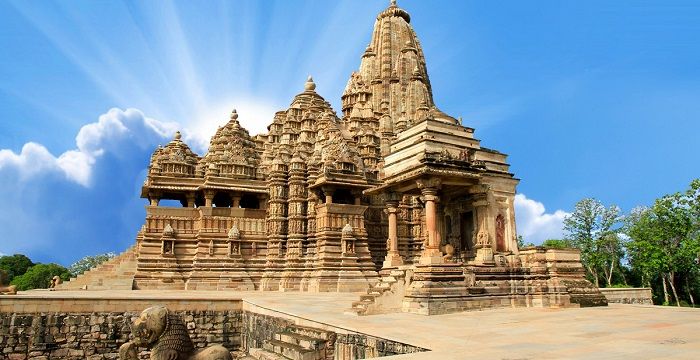
A. Solankis
B. Gahadavalas
C. Chalukyas
D. Chandelas
Ans: A
(The Khajuraho group of monuments was built during the rule of the Chandela dynasty. The building activity started almost immediately after the rise of their power, throughout their kingdom to be later known as Bundelkhand.)
6. Who among the following was popularly known as the ‘parrot of India’?
A. Tansen
B. IbnBatuta
C. Amir Khosrow
D. Ziauddin Barani
Ans: D
(Amir Khusro, a Sufi musician, poet and scholar, was known as Tuti-e-Hind (Parrot of India).
7. Who among the following was the religious guru of Shivaji?
A. Tukaram
B. Eknath
C. Jnaneshwar
D. Ram Das
Ans: D
8. Who founded the Rashtrakuta dynasty?
A. Dantidurga
B. Dhruva
C. Govinda III
D. Indira III
Ans: A
9. Who founded the Pala empire?
A. Devapala
B. Dharmapala
C. Dhruva
D. Gopala
Ans: D
10. Which of the following Mughal emperors was famous as Shah-i-Bekhabar?
A. Shah Alam
B. Jahangir
C. Shahjahan
D. Bahadur Shah I
Ans: D
11. The silver coin which was introduced by Sher Shah and continued by the Mughals was :
A. Rupaya
B. Dinar
C. Ashrafi
D. Muhar
Ans: A
12. After the death of Aurangzeb, which of the following Mughals abolished the jizya tax for the first time?
A. Jahandar Shah
B. Rafi UlDarjat
C. Mohammad Shah Rangila
D. Farrukhsiyar
Ans: A
13. The Treaty of Purandar was signed on June 11, 1665, between the Mughals and Maratha Chhatrapati Shivaji Maharaj. Who represented the Mughals in this treaty?
A. Jai Singh I
B. Man Singh I
C. Ram Singh II
D. Jai Singh II
Ans: A
14. Which among the following was called the Central Pillar of the administrative system of the Delhi sultanate?
A. Izra system
B. Iqta System
C. devshirme system
D. Chahalgami
Ans: B
15. Who abolished the Iqta system?
A. Iltutmish
B. Alauddin Khilji
C. Qutb al-Din Aibak
D. Ghiyas Uddin Balban
Ans: B
16. Who built the “Grand Trunk Road”?
A. Alauddin Khilji.
B. Ibrahim Lodhi.
C. SherShah Suri.
D. Muhammad bin Tughluq.
Ans: C
(The Grand Trunk Road (formerly known as Uttarapatha, Sarak-e-Azam, BadshahiSarak, Sarak-e-Sher Shah) is one of Asia’s oldest and longest major roads. For at least 2,500 years has linked Central Asia to the Indian subcontinent. It runs roughly 2,400 km (1,491 mi) from Teknaf, Bangladesh on the border with Myanmarwest to Kabul, Afghanistan, passing through Chittagong and Dhaka in Bangladesh, Kolkata, Prayagraj, Delhi, and Amritsar in India, and Lahore, Rawalpindi, and Peshawar in Pakistan.
Chandragupta Maurya of the Maurya Empire in ancient India built this highway along this ancient route called Uttarapatha in the 3rd century BCE, extending it from the mouth of the Ganges to the north-western frontier of the Empire. Further improvements to this road were made under Ashoka. The old route was re-aligned by Sher Shah Suri to Sonargaon and Rohtas. The Afghan end of the road was rebuilt under Mahmud Shah Durrani. The road was considerably rebuilt in the British period between 1833 and 1860.)
17. When was the Hindu kingdom of Vijayanagara founded?
A. 1336
B. 1351
C. 1388
D. 1398
Ans: A
(Harihara andBukka founded the Hindu kingdom of Vijayanagara.)
18. Whose disciple was Kabir?
A. Chaitanya Mahaprabhu
B. Ramananda
C. Ramanuja
D. Shankaracharya
Ans: B
(Kabir was the greatest among the twelve disciples of Jagadguru Ramanandacharya who believed in social unity through the removal of the distinction between the Hindus and Muslims.)
19. Who was the first Indian ruler to organize the Haj pilgrimage at the expense of the state?
A. AlauddinKhalji
B. Feroz Tughlaq
C. Akbar
D. Aurangzeb
Ans: C
(Akbar was the first Indian ruler to organize the Haj pilgrimage at the expense of the state.)
20. Chandragiri Fort is a historical fort, built in the 11th century. It is located in
A. Karnataka
B. Maharashtra
C. Madhya Pradesh
D. Andhra Pradesh
Ans: D
(Chandragiri Fort is a historical fort, built in the 11th century located in Chandragiri, Tirupati in Andhra Pradesh, India).
21.When did Aurangzeb die?
A. 1627
B. 1657
C. 1658
D. 1707
Ans: D
(His reign lasted for 49 years from 1658 until his death.)
22. The first Indian Hindi Scholar of the Mughal period was
A. Malik Muhammad Jayasi
B. Abdur Rahim
C. Mulla Wajhi
D. Chand Bardai
Ans: A
23. Who brought the famous Persian painter named Khwaja Abdus Samad to India?
A. Humayun
B. Muhammad Bin Tughlaq
C. Akbar
D. AlauddinKhalji
Ans: A
24. The foreign traveler who visited India during the Vijayanagara period was
A. Megasthenes
B. YuanChawng
C. Fa-Hien
D. Nicolo Conti
Ans: D
25. The famous Peacock Throne of Shah Jahan was taken away in 1739 by
A. Afghan invader Ahmed Shah Abdali
B. Persian invader Nadir Shah
C. Mongol invader Chengiz Khan
D. British East India Company
Ans: B
(The Peacock Throne (Takht-e-TauS) was built by Mughal Emperor Shahjahan under the commission of goldsmith Bedradru Khan in the year 1628. It was first put at Diwan-i-Aam (Agra Fort) and then moved to Diwan-i-Khas (Red Fort) during the reign of Mughal Emperor Aurangzeb. Nadir Shah invaded India in 1739 and took Peacock Throne and Koh-i-Noor diamond with him.)
Also Read: Top 50 Important Questions on Indian History
26. Name the poet who wrote “PrithvirajRaso”, a poem describing Prithviraj Chauhan’s life
A. VirSiroja
B.ChandBardai
C. MeerjaUmed
D. Nur Fateh
Ans: B
27. The Upanishads were translated into Persian by
A. Akbar
B. Dara Shikoh
C. Shah Jahan
D. Jahangir
Ans: B
( DaraShukoh subsequently developed a friendship with the seventh Sikh Guru, Guru Har Rai. Dara Shukoh devoted much effort towards finding a common mystical language between Islam and Hinduism)
28. Qutub Minar, as we find at present, was finally re-built by
A. Balban
B. AlauddinKhalji
C. Sikandar Lodi
D. Firoz Tughlaq
Ans: D
29. Name of the Bengali poet who was conferred with the title of Gunraj Khan in the Sultanate period?
A. MaladharBasu
B. Rahim
C. Chaitanya
D. Jaydeva
Ans: A
30. Who among the following was named Zinda Pir or Living Saint in the Mughal period?
A. Babur
B. Akbar
C. Jahangir
D. Aurangzeb
Ans: D
31. Which was the first garden tomb in the Indian subcontinent?
A. Tomb of Jahangir
B. Humayun’s Tomb
C. Taj Mahal
D. Tomb of Muhammad Iqbal
Ans: B
32. Ranthambhore Fort is located in
A. Maharashtra
B. Orissa
C. Rajasthan
D. Sikkim
Ans: C
33. Rajatarangini was written by
A. Kalhana
B. Alberuni
C. Harsha Vardhana
D. Kautilya
Ans: A
34. Who built the famous Shalimar bagh of Srinagar?
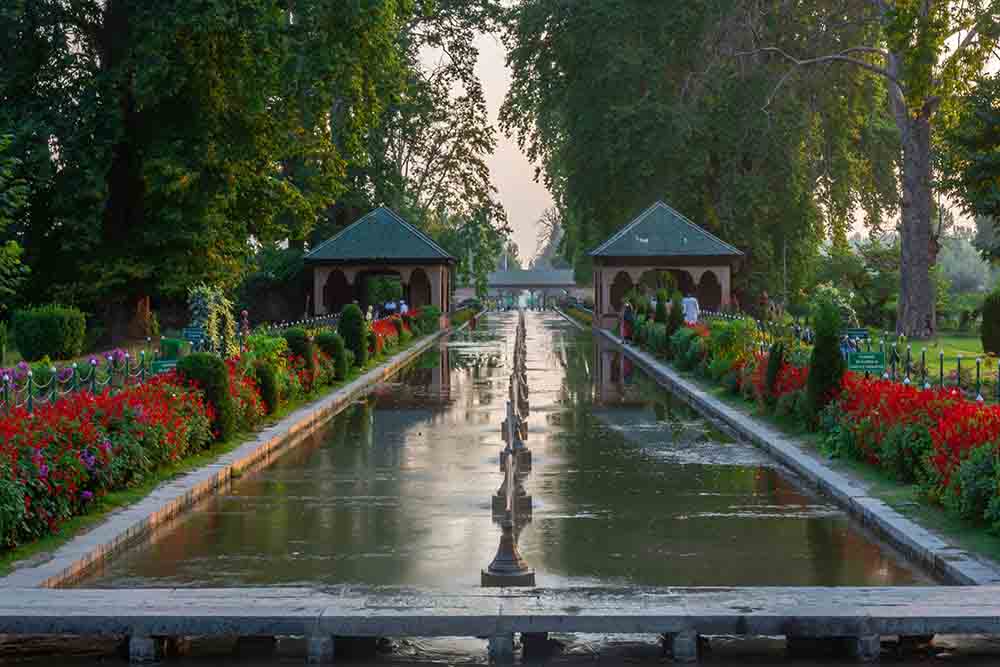
A. Humayun
B. Akbar
C. Jahangir
D. Shahjahan
Ans: C
(Emperor Jahangir built his celebrated Shalimar Bagh, his dream project to please his queen. He enlarged the ancient garden in 1619 into a royal garden and called it ‘Farah Baksh’ (‘the delightful’). He built it for his wife Nur Jahan (‘light of the world).
35. The portion of the actual produce fixed as the state’s share under the Zabti System of Mughals was __________
A. One-half
B. One-third
C. One-fourth
D. One-fifth
Ans: B
36. Who was the last Mughal emperor to sit on the peacock throne?
A. Jahandar Shah
B. Muhammad Shah
C. Shah Alam-I
D. Bahadur Shah Zafar
Ans: B
(After the death of Aurangzeb, came his son Bahadur Shah-I, and his succession- Farrukhsiyar, Rafi-ud-Darajat, Shah Jahan-II, and then came Muhammad Shah. Under his patronage, the Mughal Empire was continuously declining in its powers and was becoming vulnerable, ultimately resulting to the Mughal-Maratha war. Meanwhile, the Persian forces saw their chance to invade. In February 1739, The Persian forces with Nadir Shah Afshar as their leader captured Delhi. However, they left the city in May 1739 taking with them, the precious Peacock Throne as the trophy of victory. Hence, Muhammad Shah is said to be the last Mughal Emperor who sat on the Peacock throne.)
37. Akbar’s tomb is located at which of the following places?
A. Sikandara
B. Agra
C. Fatehpur Sikri
D. Allahabad
Ans: A
38. Who founded the Mughal dynasty?
A. Akbar
B. Aurangzeb
C. Babur
D.Humayun
Ans: C
39. Which of the following built the city of Hyderabad as his residential capital and called it Bhagyanagar?
A. Ibrahim Qutb Shah
B. Muhammad Quli
C. Muhammad Qutb Shah
D. Abdullah Qutb Shah
Ans: B
(Muhammad Quli built the city of Hyderabad as his residential capital. He called it Bhagyanagar. Muhammad Quli often entered into conflicts with Bijapur. He was also threatened by the Mughal army.)
40. Who among the following Delhi Sultans made Agra the capital of his Empire?
A. Iltutmish
B. Balban
C. Feroz Shah Tughlaq
D. Sikander Lodhi
Ans: D
41. Guerrilla warfare was pioneered by-
A. Aurangzeb
B. Akbar
C. Shivaji
D. Balaji Rao
Ans: C
42. Who is considered to be responsible for the decline of the Mughal Empire?
A. Ibrahim Lodhi
B. Mohammad Tughlak
C. Bahadur Shah Zafar
D. Aurangzeb
Ans: D
43. With reference to medieval Indian rulers, which one of the following statements is correct?
A. Alauddin Khilji first set up a separate area’s department.
B. Balban introduced the branding of horses in his military.
C. Muhammad Bin Tughlaq was succeeded by his uncle in the military.
D. Firoz Tughlaq set up a separate department of slaves.
Ans: D
44. The only converted Indian Muslim to become the head of the Delhi Sultanate was:
A. Kaikubad
B. Nasiruddin Khusrau Shah
C. Masud Shah
D. Qaimurs
Ans: B
45. Who wrote the book called Kitab-i-Nauras?
A. Amir Khusro
B. Badauni
C. Ibrahim Adil Shah II
D. Ala-ud-din Bahmani
Ans: C
46. When was the ‘Battle of Tukaroi’ fought?
A. 1532
B. 1565
C. 1575
D. 1546
Ans: C
47. Buland Darwaza at Fatehpur Sikri was built by Akbar to commemorate his victory over which province?
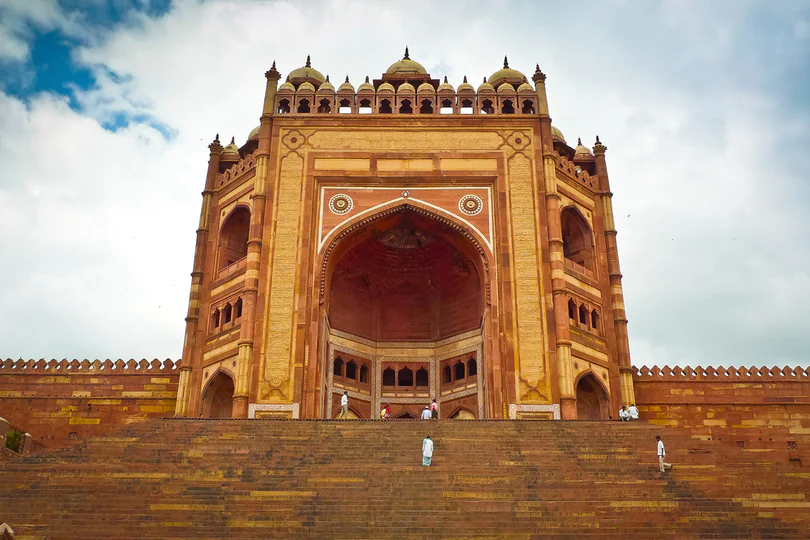
A. Gujarat
B. Sind
C. Punjab
D. Mewar
Ans: A
48. On whom did emperor, Akbar conferred the title of ‘Jagat Guru’?
A. Purushottam
B. Dastur Meherji Rana
C. Hari Vijay Suri
D. Devi
Ans: C
49. Which Mughal emperor enrolled Guru Govind Singh in Mughal service?
A. Bahadur Shah I
B. JahandarShaha
C. FaurkhSiyyar
D. Mohammed Shah
Ans: A
50. Khalsa in Mughal rule meant
A. The Land belonging to Emperor
B. All royal system
C. Land from where revenue was collected for royal treasure
D. Religious Land grant
Ans: A
51. In 1576, the Mughal army fought the battle of Haldighatiwith
A. Prithvi Raj Chauhan
B. Maharana Pratap
C. Udai Singh
D. Man Singh
Ans: B
52. Which is not a characteristic of the Taj Mahal’s architecture?
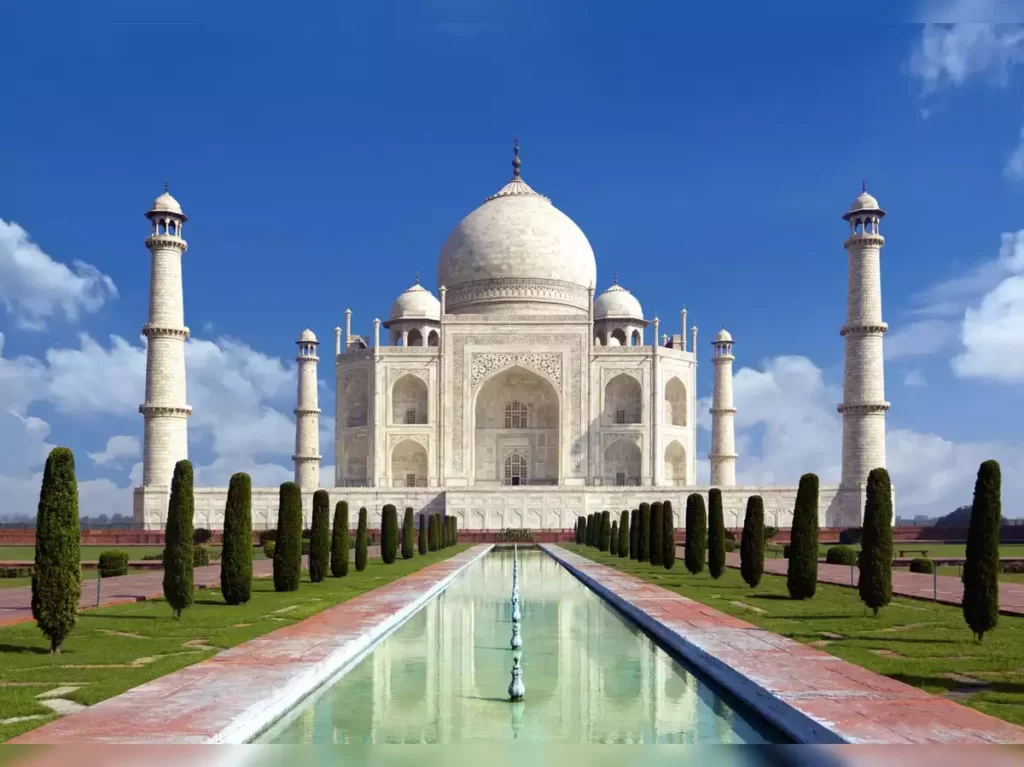
A. Charbagh Plan
B. Double Dome
C. Pietra Dura
D. White Marble
Ans: A
53. Who was the member of Shivaji’s Ashtapradhan who looked after foreign affairs?
A. Peshwa
B. Sachiv
C. Pandit Rao
D. Sumant
Ans: D
54. Mughal-Maratha treaty of 1719 was concluded in the times of?
A. Jahandar Shah
B. FarukhSiyyar
C. Mohammed Shah
D. Bahadur Shah II
Ans: B
55. Before which of his important battles in India did Babur declare the abolition of Tamghatax?
A. Panipat
B. Khanwa
C. Chanderi
D. None of these
Ans: B
56. What was the percentage (of the total revenue charged) of the extra tax charged by Sher Shah for the use of general welfare in calamities and emergencies?
A. 7.5%
B. 5.0%
C. 2.5%
D. 1.5%
Ans: C
57. Which year of Akbar’s reign has been regarded by the historian Vicent A. Smith as the most critical time?
A.1556 AD
B. 1561 AD
C. 1571 AD
D. 1581 AD
Ans: D
58. Among the following, which Mughal emperor introduced the policy of Sulah-i-Kul?
A. Akbar
B. Jahangir
C. Humayun
D. Aurangzeb
Ans: A
59. __________ became an integral part of Shahjahan’s empire
A. Golkunda
B. Ahmednagar
C. Bijapur
D. None of these
Ans: B
60. Which of the following tombs is placed in the center of a large garden and resembles as a prototype of the Taj Mahal?
A. Akbar’s tomb at Sikandara
B. Itmaduddaula’s tomb at Agra
C. Shershah’s tomb at Sasaram
D. Humayun’s tomb at Delhi
Ans: D
61. Chhatrapati Shivaji Terminus station was designed by_______

A. Frederick William Stevens
B. Santiago Calatrava
C. Fazlur Rahman Khan
D. Frei Otto
Ans: A
62. Who was the Mughal Prince who was well-versed in Arabic, Persian, and Sanskrit?
A. Prince Akbar
B. Prince Salim
C. Prince SulaimanShukoh
D. Prince Dara Shukoh
Ans: D
63. What did Akbar do to bring Hindu-Muslim unity?
A. Prohibited cow-killing
B. Encouraged cow-killing
C. Remained silent to cow-killing
D. Taxed cow-killing
Ans: A
64. What do you mean by Turkan-i-Chahalgani?
A. Group of forty ruling elite
B. Group of forty ministers
C. Group of forty Islamic representatives
D. None of the above
Ans: A
65. What were the silver coins issued by Vijayanagar rulers called?
A. Varahas
B. Tar
C. Jital
D. Pagodas
Ans: D
66. SamranganaSutradhar was the work on:
A Medicine
B Architecture
C Yoga
D None of the above
Ans: B
67. To which Sikh Guru did Akbar grant the present site of Amritsar?

A. Amar Das
B. Angad
C. Ram Das
D. Arjan
Ans: A
68.‘Hazarat-i-Ala’ title was won by which of the following kings?
A. Akbar
B. Babar
C. Sher Shah Suri
D. Shahjahan
Ans: C
69. Which of the following was/were written in the time of Akbar?
1. Humayun Namah
2. Tarikh-i-Shershahi
3. Akbar-Namah
4. Muntakhab-ut-Tawarikh
Codes:
A. 1 and 3 only
B. 3 only
C. 2, 3 and 4
D. 1, 2, 3 and 4
Ans: D
70. With reference to the economic history of medieval India, the term ‘Araghatta’ refers to
A. bonded labor
B. land grants made to military officers
C. waterwheel used in the irrigation of land
D. wasteland converted to cultivated land
Ans: C
71. Regarding the taxation system of Krishna Deva, the ruler of Vijayanagar, consider the following statements:
1. The tax rate on land was fixed depending on the quality of the land.
2. Private owners of workshops paid an industry tax.
Which of the statements given above is/are correct?
A. 1 only
B. 2 only
C. Both 1 and 2
D. Neither 1 nor 2
Ans: C
72. The arrival of Babur into India led to the
1. introduction of gunpowder in the subcontinent
2. introduction of the arch and dome in the region’s architecture
3. establishment of the Timurid dynasty in the region
Select the correct answer using the code given below:
A. 1 and 2 only
B. 3 only
C. 1 and 3 only
D. 1, 2 and 3
Ans: B
73. The third battle of Panipat was fought in-
A. 1761
B. 1739
C. 1526
D. 1556
Ans: A
74. Buland Darwaza was built by-
[A] Humayun
[B] Akbar
[C] Babur
[D] Aurangzeb
Ans: B
75. The Mysore Palace was the residence of the-

A. Palas
B. Wodeyars
C. Chandelas
D. Budelas
Ans: B
76. Muhammad Bin Tughlaq changed his capital from Delhi to
A. Lahore
B. Munger
C. Agra
D. Daulatabad
Ans: D
77. Rani Durgamati was a —————– Princes
A. Gujjar
B. Chandela
C. Paramara
D. None of the above
Ans: B
78. Which of the Following ruler Attacked 17 times in India?
A. Ghori
B. Ghazni
C. Sher Shah
D. Akbar
Ans: B
79. Which of the Following Rulers From Central Asia Conquered North India in 1192?
A. JalaluddinMankbarni
B. Mahmud Ghazani
C. Muhamad Ghori
D. Mahumad bin Suri
Ans: C
(Mahmud Ghori Defeat Prithivi raj Chauhan in the Second Battle of Tarain in 1192 AD and Conquer ed North India)
80. Group of Monuments at Hampi is in_________
A. Karnataka
B. Madhya Pradesh
C. Maha9rashtra
D. Rajasthan
Ans: A
81. The Nayakas in the Vijayanagar empire were
A. Central Ministers
B. Cavalry soldiers
C. Priests of large and powerful temples
D. Military chiefs controlling particular territories
Ans: D
82. The market Control system was introduced by?
A. Jalaluddin Khilji
B. Allaudin Khilji
C. Gyasuddin Tughluq
D. Firoz Shah Tughlaq
Ans: B
83. Ghazni was a small principality in?
A. Mongolia
B. Turkey
C. Persia
D. Afghanistan
Ans: D
84. Who was the author of the book Kitab-ul-Hind?
A. Abu Said
B. Abu Fazzi
C. Firdausi
D. Al Beruni
Ans: D
85. Who is known as the “slave of a slave”?
A. Muhammad bin QAsim
B. Mahmud of Ghazni
C. Iltutmish
D. QutubuddinAibak
Ans: C
86. The largest standing army of the Delhi Sultanate directly paid by the State was created by?
A. Balban
B. Illtutamish
C. Muhammad Bin Tughlaq
D. Alauddin Khilji
Ans: D
87. Purana Qila at Delhi was built by—–
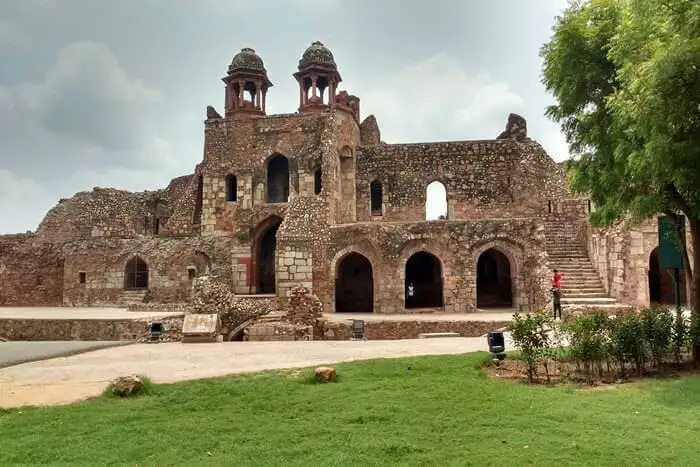
A. Akbar
B. Shershah
C. Humayun
D. Shahjahan
Ans: B
88. What is meant by Mughalai?
A. Infantry of the Mughals
B. Very rich food
C. Royal household
D. Mughals territories from which Chauth was Claimed
Ans: D
89. Which of the following is not introduced by Shivaji?
A. Land Tax
B. Chauth
C. Sardeshmukhi
D. Pilgrim Tax
Ans: D
90. Who among the following took a greater interest in laying out the garden tHan others?
A. Humayun
B. Babur
C. Akbar
D. Jahangir
Ans: B
91. Which of the following rulers built the Bibi ka Maqbara?
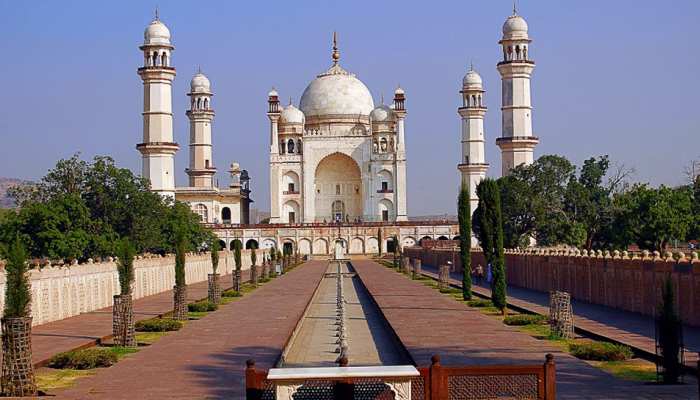
A. Akbar
B. Jahangir
C. Shahjahan
D. Aurangzeb
Ans: D
92. The famous historical monument, Atal Mosque, is associated with the?
A. Sultans of Delhi
B. Mughal Rulers
C. Sharqi Ruler
D. Rohilla Rulers
Ans: C
93. Which one of the following methods of revenue assessment is related to the Vijayanagar empire?
A. Chauth
B. Ryotwari
C. Rae Rekho
D. Sardeshmukhi
Ans: D
94. What is the name of the autobiography of Babur?
A. Turk-e-Jahangiri
B. Ain-i-Akbar
C. Baburnama
D. Humayun-nama
Ans: C
(Baburnama is also known as “Tuzuk-i-Baburi” in the Turkish language)
95. Who wrote “Humayun Nama”?
A. Humayun
B. Akbar
C. AbulFazl
D. Gulbadan begum
Ans: D
(Gulbadan begum was the daughter of Mughal emperor Babur and sister of Humayun)
96. Who was the chief architect of the Taj Mahal?
A. Ahmad khan
B. Mohammad Khan
C. Makramat khan
D. UstadAhmdLahouri
Ans: D
(With the help of more than 20,000 workers, he made this seventh wonder of the world in Agra on the bank of Yamuna river. He started to build Taz Mahal in 1632 and it was completed entirely in the year 1653)
97. When did Shah Jahan build “Red Fort” or Lal Qila” by the chief architect Ustad Ahmed Lahori?
A. 1638
B. 1639
C. 1632
D. 1648
ANS= B
98. The tomb of Babur is located at
A. Agra
B. Delhi
C. Kabul
D. Lahore
Ans: C
(On 26th December 1530 AD, Babur dies in Agra due to heavy drinking. At first, he was buried in Agra against his wishes. But later he was reburied at Bagh-e-Babur Garden in Kabul, Afghanistan by Sher Shah Suri)
99. Akbar defeated Maharana Pratab Singh in the Battle of Haldighati in the year—-
A. 1560
B. 1566
C. 1576
D. 1580
ANS= C
(On 18th June the battle was fought between Maharana Pratap and the Mughal forces led by Man Singh I of Amber. The Mughals carried the day after inflicting significant casualties on Mewar forces, although they failed to capture Pratap,)
100. Which one of the following monuments in Delhi also means the “instruments for measuring the harmony of the heavens”?
A. Qutab Minar
B. Red Fort
C. Jantar Mantar of Delhi
D. Humayun’s Tomb
Ans: C
(The monument is located in New Delhi and the meaning of the word ‘Jantar Mantar’ means an instrument for measuring the harmony of the heavens. It was built by Maharaja Jai Singh 11 of Jaipur in 1724 and its height is 723m.)

